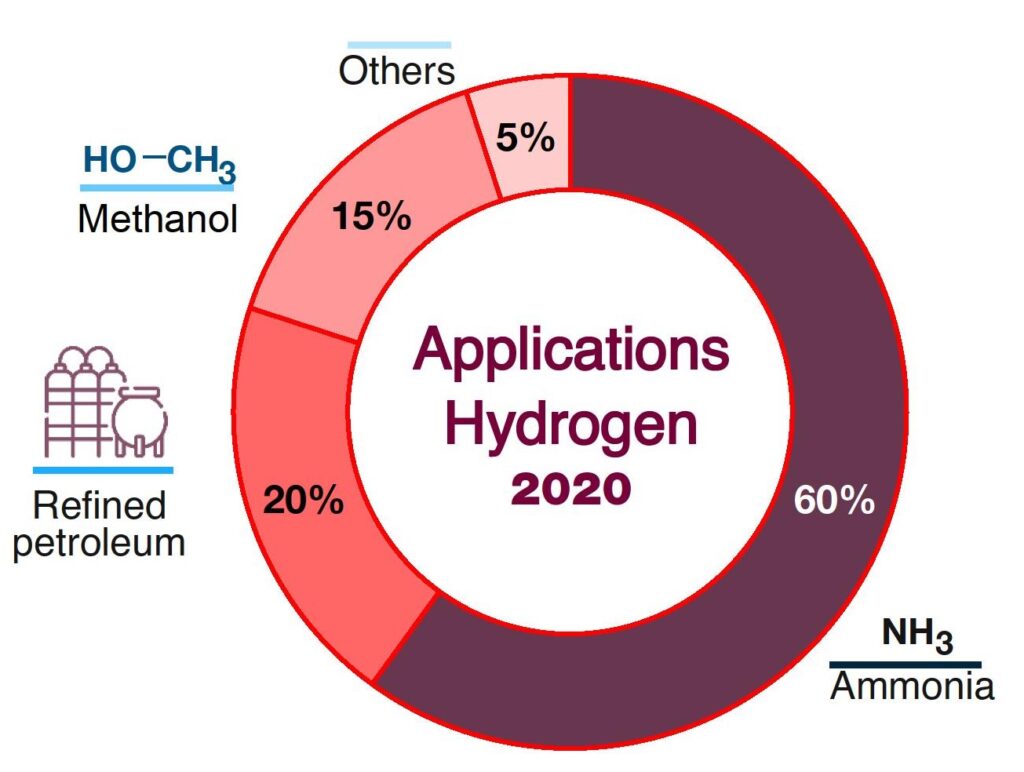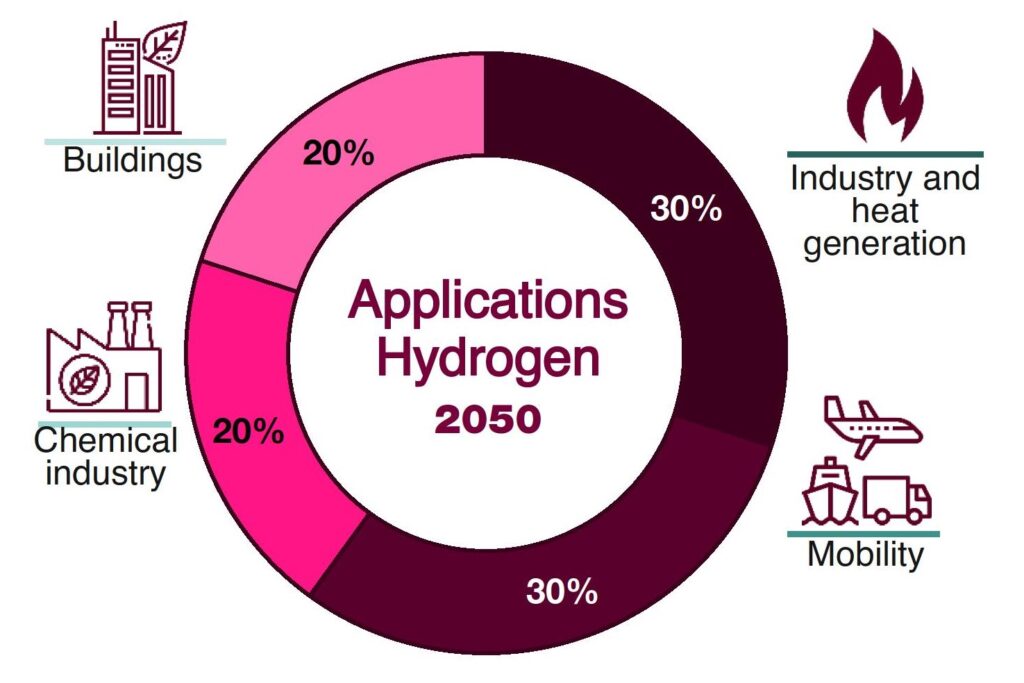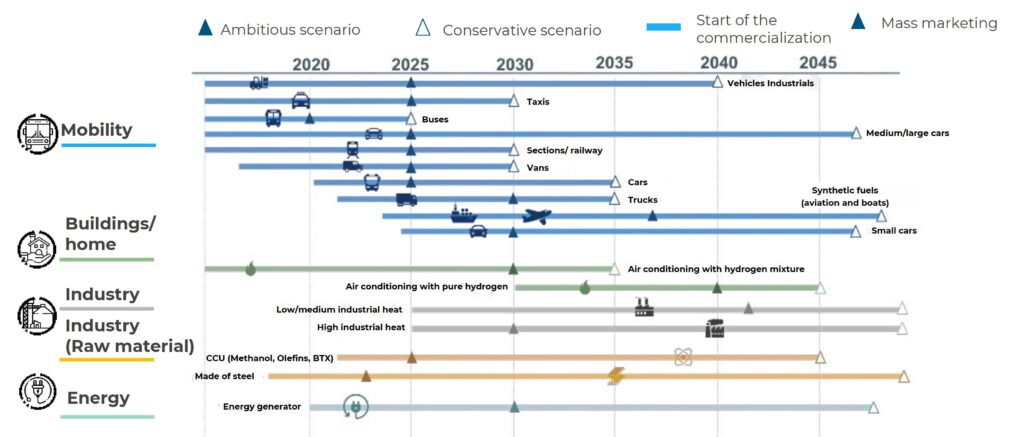Hydrogen is expected to be consolidated in 2050 to decarbonize several sectors
The main growth driver of the hydrogen market will be the increase in application in various industries, as well as the demand for clean and green fuel. The current applications diverge from the forecasts for the year 2050, and as can be seen in the graph, the main fields are the following:

Current applications are around ammonia and the chemical industry. Values in the mobility and construction sectors still have very residual values.


The consolidation of hydrogen as heat generation and the use of hydrogen as a transition vector towards the decarbonisation of mobility is foreseen.
Sources: Morgan Stanley; Financial Times; Grandwiewresearch
The impact of hydrogen over time will depend on the evolution of investments by sector

Sources: Hydrogen Roadmap Europe